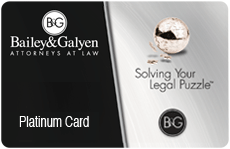Slip and Fall? Where Do You File? When Must You File? What Must You Prove?
 In Texas, as in all states, persons and companies who own or control residential or commercial property have a duty to maintain the premises so as to minimize the risk of injury to anyone legal visiting the property. If you have been injured in a slip and fall, you have a right to file a lawsuit to seek full and fair compensation for any losses resulting from your injuries.
In Texas, as in all states, persons and companies who own or control residential or commercial property have a duty to maintain the premises so as to minimize the risk of injury to anyone legal visiting the property. If you have been injured in a slip and fall, you have a right to file a lawsuit to seek full and fair compensation for any losses resulting from your injuries.
Where Is a Slip and Fall Lawsuit Filed?
A slip and fall claim, as a form of personal injury lawsuit, is a civil action, as opposed to a criminal prosecution. To pursue damages (compensation for your losses), you must file your complaint in a civil court. There are limited circumstances where you may be able to file a personal injury lawsuit in a federal court, but, as a practical matter, most slip and fall/personal injury claims in Texas are filed in state court. In Texas, that court is known as a trial court or district court.
How Long Do You Have to File a Slip and Fall Lawsuit?
In Texas, as in every state, there’s a law, known as the “statute of limitations”, which sets the time limit for filing a personal injury claim. A slip and fall claim in the Lone Star State must be filed within two years of the date of the accident. If an injured party fails to meet that deadline, the defendant can ask the court to dismiss any subsequently filed action.
There’s benefit to all parties by requiring that any legal action be filed in a timely manner. Memories can fade quickly, witnesses can move away or die, and evidence can be lost. Furthermore, it’s generally perceived to be unfair to allow a potential claim to hang over a defendant’s head indefinitely.
What Must You Prove in a Slip and Fall Claim in Texas?
A slip and fall action will customarily be based on a legal theory of negligence. To prove negligence, you must show that:
- The defendant (person from whom you seek compensation) failed to meet the standard of care reasonably expected – Every person in society must act reasonably when doing anything, from driving a car to maintaining residential or commercial property. That standard is determined by the jury on a case-by-case basis.
- The failure to meet the standard of care caused the slip and fall – You must show actual cause—that you would not have suffered the injury if the defendant had acted reasonably—and you must show proximate cause—that the accident and/or injury were “reasonably foreseeable” as a consequence of your failure to meet the standard of care
- As a result of the slip and fall, you have sustained actual losses – You cannot recover for losses that are covered by insurance or that have no financial value
In slip and fall cases, you must also demonstrate that you were legally visiting the property, as owners and others in control of residential or commercial property have no duties to trespassers.
Contact the Proven Personal Injury Lawyers at Bailey & Galyen
At the law offices of Bailey & Galyen, we understand the devastating impact any type of personal injury can have on every part of your life. We’ll aggressively protect your rights throughout the legal process, acting as your intermediary with insurance companies and as your voice in all meetings, hearings and legal proceedings. Contact us by email or call our offices at 844-402-2992. Our phones are answered 24 hours a day, seven days a week.








